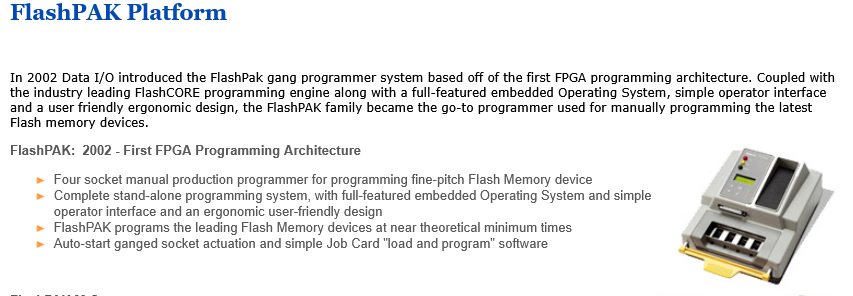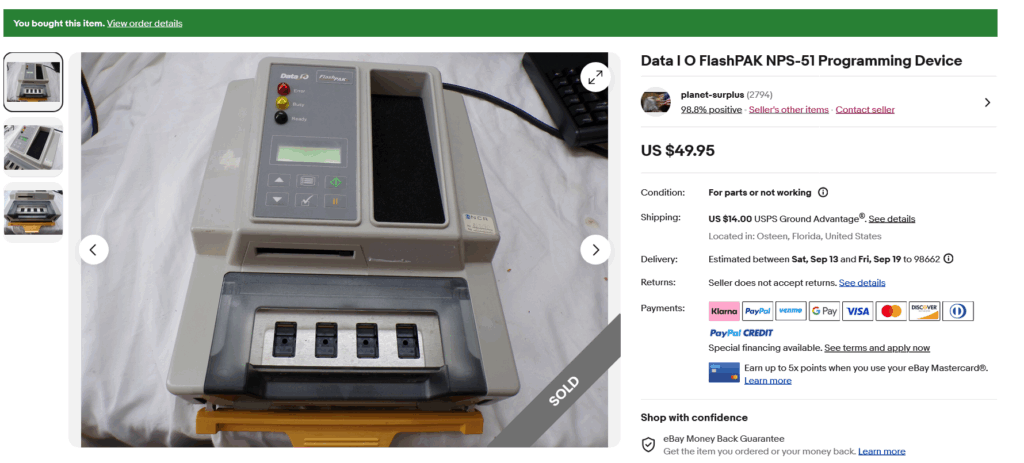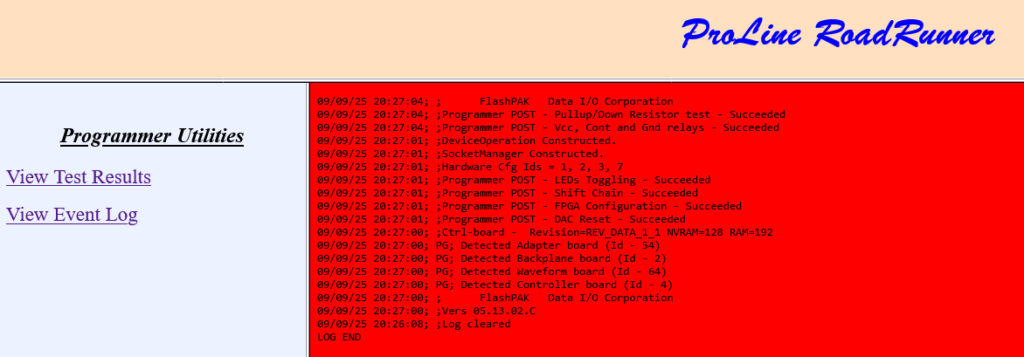I haven’t seen anyone do a teardown of a Data I/O FlashPak NSP-51 chip programmer yet, so I knew this would make for some great content.
For a while, I had my eye on a FlashPak III and even came close to getting one, but that deal fell through thanks to the extra costs piled on by tariffs. Not ready to give up, I set up saved searches on FeeBay for “FlashPak,” “FlashPak II,” “FlashPak III,” and all the other possible variants. After some patience, my persistence finally paid off one popped up at a price I simply couldn’t refuse.
Sure, it was listed as “sold for parts and repair,” but that only adds to the intrigue. Since I’m after it purely for teardown content, as long as the unit is complete, that’s all I really care about. The timing couldn’t have been better, and I knew right away this was the perfect chance to dig in, document the teardown, and bring something fresh to the blog.
Delivered September 9th 2025

I’ll also be doing the unboxing and initial teardown live on my YouTube channel @Rhine_Labs, so stay tuned it should be a fun one.
Photos, Check back later!! I Will Add them as I Update!
Took a little work around to get it to connect to the network. I need to Locate a copy of TaskLink 7.81 for flashpak all I can find is 5.0 for flashpak and 7.81 for the Unifamily and Sprint.
From the Teardown The flashpak is running a Freescale XPC850SR PowerQUICC PowerPC SBC, Board On the System Config Says RPX Lite DI/O I was able to Locate the data Sheet for an RPX Light From Embedded Planet. I emailed them asking for more info on the Board. NXP Has the RPX Lite User Manual for the dev board and a Getting Started Guide.
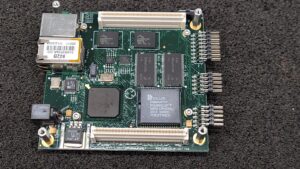
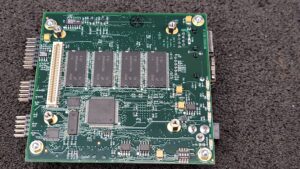
You can Telnet and FTP in to it. I am not sure but looks like older linux based system.
OSE Shell OSE 4.3.1 if anyone knows? Form my research I am thinking Enea Linux 4.0 I am not a linux guru only know basic commands enough to break things.

September 15th 2025, A quick conversation with Data I/O it seems that the last version of TaskLink is V9.40. I am not Sure as I tired V7.71 it and said the SysFlash.bin the to large. Tech support said they could see if they can find a copy of it for me.
The Archived FlashPak Versions of Task Link are Below. If anyone has the missing ones archived let me know.
TaskLink v5.41 / SysSW v05.13.01.C / AlgSet 2005A
TaskLink v5.50 / SysSW v05.13.01.C / AlgSet 2005B
TaskLink v5.53 / SysSW v05.13.04.C / AlgSet 2005B
TaskLink v5.54 / SysSW v05.14.01.C / AlgSet 2005C
TaskLink v6.00 / SysSW v05.15.01.C / AlgSet 2006A
TaskLink v6.10 / SysSW v05.15.02.C / AlgSet 2006B
TaskLink v7.30 / SysSW v05.21.00.C / AlgSet 2008B
TaskLink v7.31 / SysSW v05.22.00.C / AlgSet 2008B
TaskLink v7.51 / SysSW v05.41.00.C / AlgSet 2010A
Firmware Only / SysSW v05.44.00.C
TaskLink v7.71 / SysSW v05.49.00.C / AlgSet 2012B
Firmware Only / SysSW v05.52.00.C
Firmware Only / SysSW v05.53.00.C
TaskLink v8.20 / SysSW v05.53.00.C / AlgSet 2014C
Firmware Only / SysSW v06.30.00.C
See the Data I/O Groups For Archive.
I couldn’t sleep and I had this thought stuck in my head about whether the firmware on this 20-year-old hardware needed to be updated incrementally. So, I decided to test it out.
I began with SysSW v05.13.01.C, and it loaded just fine. Next, I moved up to SysSW v05.14.01.C another sucess. From there, I jumped ahead to SysSW v05.22.00.C, no issues a successful firmware flash.
Feeling confident, I already had installed TaskLink v7.71 and loaded a SysSW v05.49.00.C to the card. To my surprise, it took without a single error.
Finally, I tried TaskLink v8.20 / SysSW v05.53.00.C and bingo, success! I did have to reload the network as it was lost during an update.

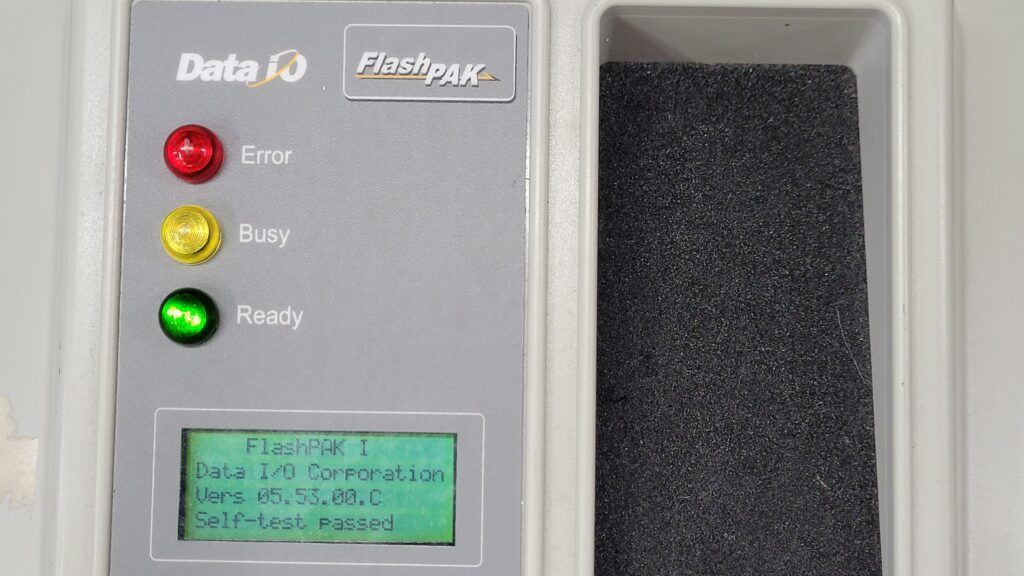
I decided to stop there. I wasn’t about to push it upto SysSW v06.30.00.C, since I don’t have the matching TaskLink version or the necessary algorithms for that firmware.
I Live Streamed it.
I did notice that the web interface changed after the update. I’m still not entirely sure which firmware version is the latest, so there’s a chance I may have gone a little too high. It might be worth testing whether the system can be rolled back to a much earlier version. (I did a mini test at the start going form V05.13.02.C to the v05.13.01.C it seemed to be able to roll back)

Here is the Debug Log.
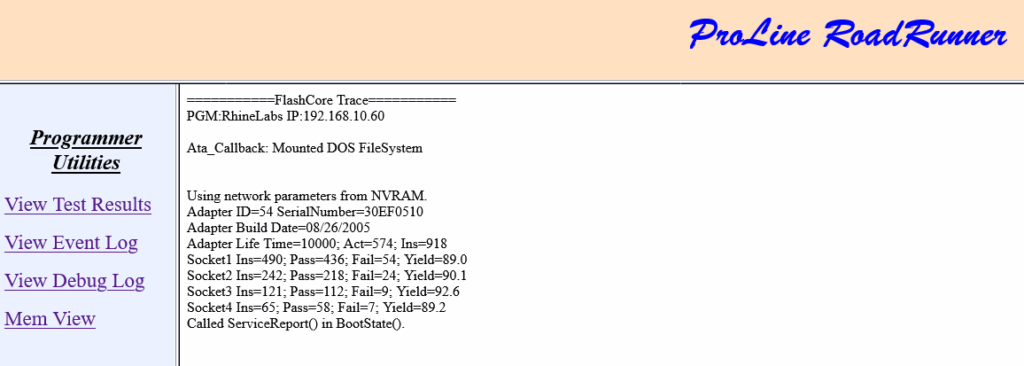
I did some exploring of the firmware and found a hidden web page. http:// IP address /AdapterRevNumberProgramming it takes you to a page which appears to allow you to change the programming adapter information. So lets look at the adapter.

The Adapter that I have Data IO Flashpak Adapter PA-T054 or PAA-T054 TSOP48 715-4214-001
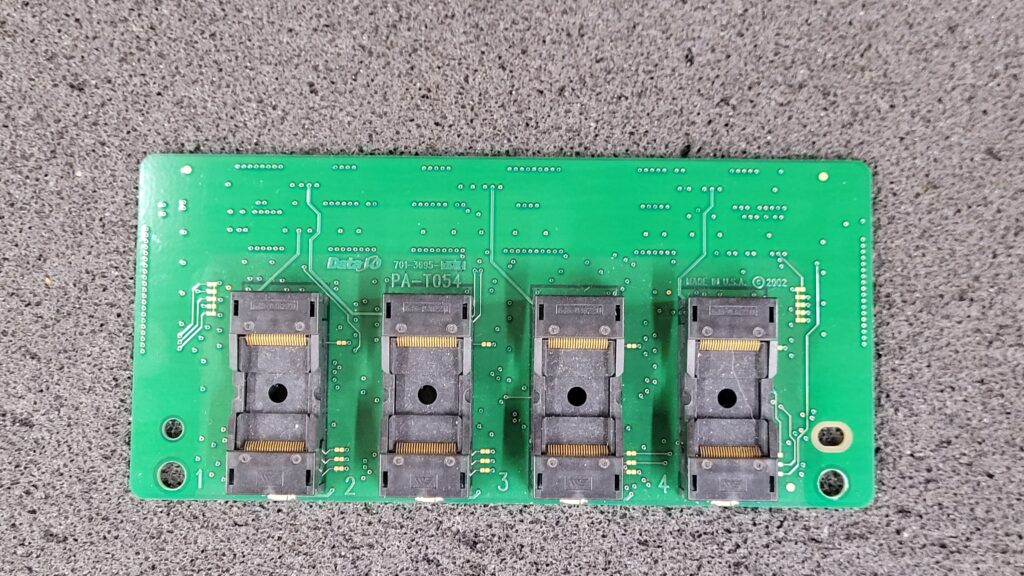
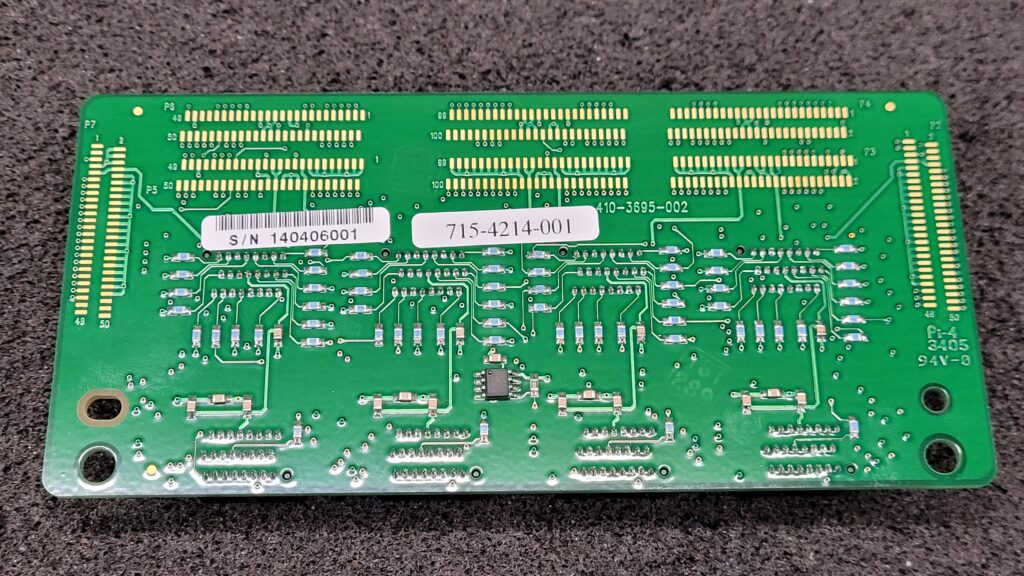
Looks like the ID Chip is a 24C04
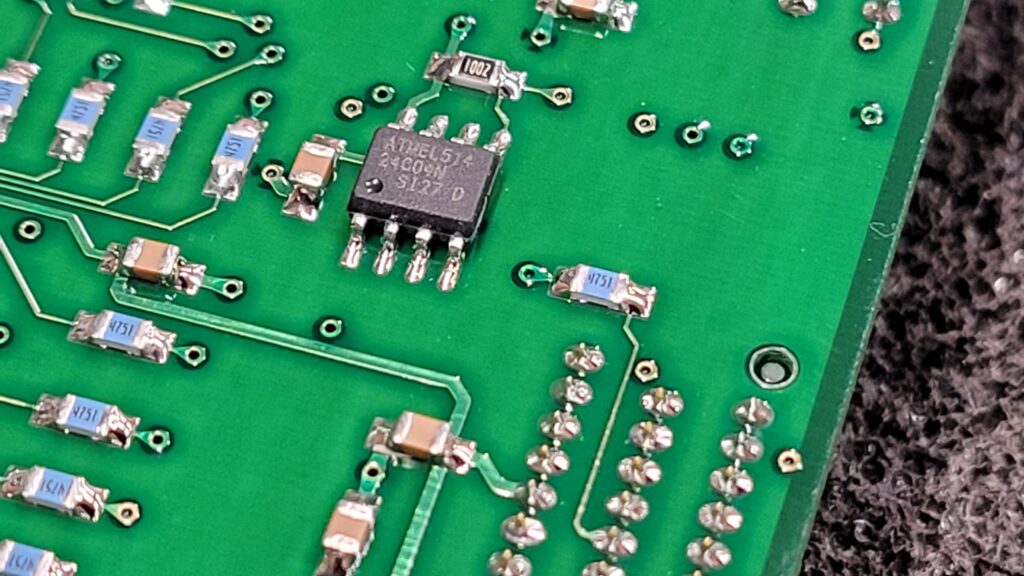
Lets Remove it and Back it up I am Sure if somthign happened to it data I/O could not make available a replacement, all prepared and in the adapter for the read with the Xeltek 6100N
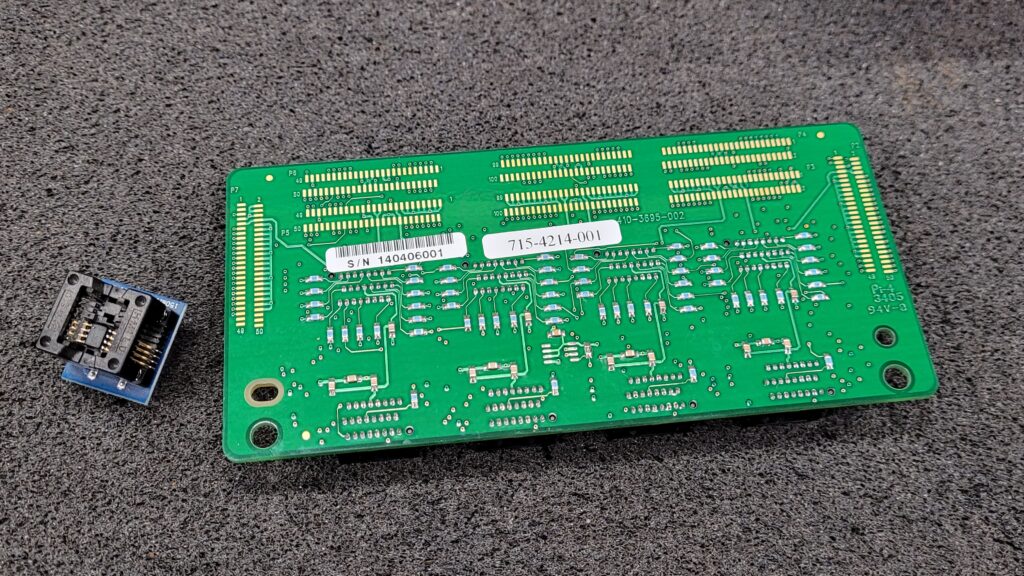
Backup Was a Success (Yes, Easy Chip to Read IO Know!!)

Here are the Adapter Stats Form the programmer looks really straight forward may require some decoding.
Adapter Number=30EF0510
Adapter Mfg Date=08/26/2005
Adapter Cycle Count=574
Adapter Insertions=918
Adapter Passed Devices=824
Adapter Failed Devices=94
Adapter Yield=89.76
Adapter Skt 1 Insertions=490
Adapter Skt 1 Passed Devices=436
Adapter Skt 1 Failed Devices=54
Adapter Skt 1 Yield=88.98
Adapter Skt 2 Insertions=242
Adapter Skt 2 Passed Devices=218
Adapter Skt 2 Failed Devices=24
Adapter Skt 2 Yield=90.08
Adapter Skt 3 Insertions=121
Adapter Skt 3 Passed Devices=112
Adapter Skt 3 Failed Devices=9
Adapter Skt 3 Yield=92.56
Adapter Skt 4 Insertions=65
Adapter Skt 4 Passed Devices=58
Adapter Skt 4 Failed Devices=7
Adapter Skt 4 Yield=89.23
So Far for a 20+ year Old Obsolete Device this thing had some advanced technology as far as the world of programmers way ahead of its time!
I have Tested it with a Device, As with most all data I/O equipment the software is not to user friendly and the system is slow but the programming speed is average. These were designed for small production doing hundreds if not thousands of chip. It is great tot experience the system ill do a video in the future of steps it takes to set up and program a device. Still feels odd using windows XP.
Last Updated on October 8, 2025 by Steven Rhine
